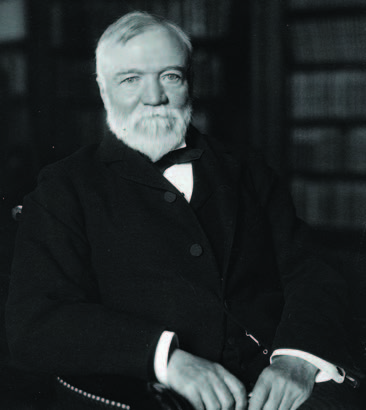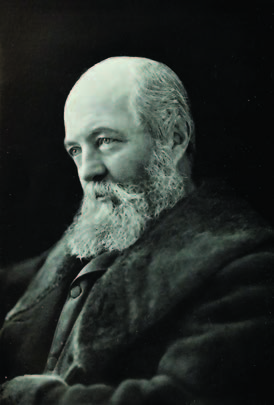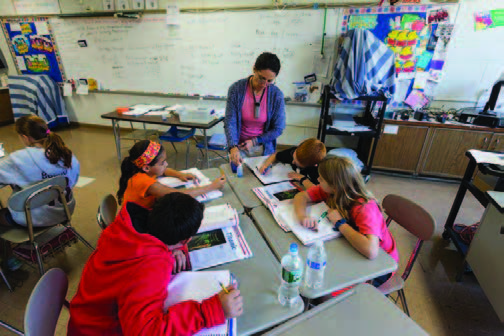Incorporating A Team Approach During Transition Years
by David Galbierczyk, HBW Principal – Carnegie House
Many families make Verona their home because of our town’s outstanding neighborhood elementary schools. Navigating the transition from the district’s small elementary schools to the middle school, however, can often be a challenge for students and parents alike. With this in mind, two years ago, the District explored a house model system at HBW. Upon reviewing feedback from the school community, it became clear that adopting the house model would provide HBW’s staff with a structure to better support the academic, social, and emotional needs of its students.
Developing a middle school house model focused on achieving the goal of cultivating smaller, more personalized learning communities for our students. Although new to Verona, a house model, or team based approach, is nothing new to schools. The middle school house model structure was established on years of research and practical application in many school districts across the nation where the design enables the creation of two smaller schools within a school. The transition from elementary school to high school is critically important. Middle school children greatly benefit from social, emotional, and academic support through a focused, concerted effort by educators. The most effective way of accomplishing this goal is to design a system where teachers are provided opportunities to collaborate and utilize their time most effectively to constructively dialogue about students. Most importantly, the house model provides a sense of community to foster meaningful relation-ships amongst teachers, students, and parents. The 2016-2017 school year marks the second year of H.B. Whitehorne Middle School’s house model, and the school’s principals and teachers are looking to build upon the many successes from its first year which included a 41% reduction in the number of failing marking period grades compared to the previous year.



HBW’s house model is designed to provide strong academic, social, and emotional support to the school’s 720 students through smaller learning communities, increased and targeted interventions with students, and regular communication between the school and parents. Students and teachers are grouped in interdisciplinary teams so that the teachers of the core subjects of English, math, science, and social studies share the same students while also having common planning time to discuss both student-specific issues as well as curriculum development. The house model structure also allows for parent meetings to take place with a child’s 7-member team during the school day.
The house model teams are committed to developing partnerships between the school and home through frequent individual and grade level-specific communication. Weekly emails include important announcements and reminders, as well as updates from the core teachers that include information regarding the current unit of study and upcoming assessment dates. Improved communication between the school and home is a main goal of the house model, and HBW parents have been effusive in their praise of the school’s efforts in this area.
Both the Carnegie and Olmsted Houses support 5th, 6th, 7th, and 8th grade teams. All four teams that comprise each house consist of teams of core subject teachers, an administrative assistant, a guidance counselor, and a principal. Upon entering HBW, students are assigned to either the Carnegie House or the Olmsted House, and remain in that house through the end of 8th grade. Administration and school counselors work closely with the district’s elementary school principals and their 4th grade students in an effort to form two houses where students’ anticipated achievement and needs are as similar as possible. Siblings are assigned to the same house so that families, the school counselor, and the principal can build upon their existing relationship.
Each team formally meets at least two times per week, with the team’s school counselor and principal in attendance for at least one meeting per week. One of the core subject teachers on each team serves as its Team Coordinator. Although the Team Coordinator plays a pivotal role in facilitating team meetings, all team members contribute to its discussions, planning, and decisions. In addition to discussing specific student issues, teams coordinate assessment dates to ensure students are not subjected to multiple major assessments on the same day. Prior to the implementation of the house model, many HBW teachers taught several subjects in multiple disciplines. However, the house model structure allows teachers of the core subjects of English/Literacy, Math, Science and Social Studies to focus primarily on one subject. By being able to focus on a single subject, teachers have more time to collaborate with one another in refining units of study.
HBW’s Carnegie House and Olmsted House are both named for famous Americans who have influenced the history of Verona. The Carnegie House, whose principal is Mr. Galbierczyk, is named for the famous industrialist Andrew Carnegie. The Verona Public Library was one of thousands of free, public libraries whose establishment was funded by Carnegie. Frederick Law Olmsted, for whom HBW’s Olmsted House is named, is considered to be the father of American landscape architecture. New York City’s Central Park and Verona Park are among the many beautiful public parks that were designed by the Olmsted firm. Ms. McNeal serves as the Olmsted House principal.
After a highly successful first year, the staff is committed to further utilizing its structure to help provide smaller learning communities at HBW.
Mr. Galbierczyk and Ms. McNeal will continue to draw upon the benefits of the house model’s structure in order to attain its goal in providing outstanding support of students’ academic, social, and emotional needs.
Click here to read more articles in the Verona Public Schools Magazine 2016-2017 Edition.



